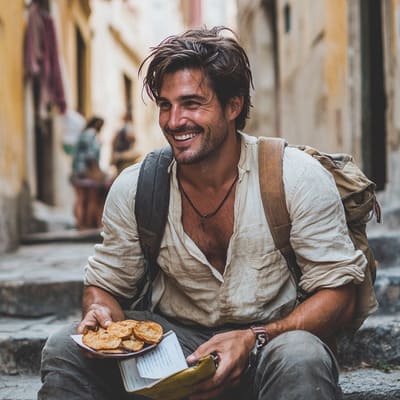Street Photography Ethics: Respecting Locals While Capturing Culture
Street photography is a unique art form that captures the essence of daily life and the culture of communities. It allows photographers to document the beauty, struggles, and diversity of different societies through candid shots of people and their surroundings. However, as with any form of photography, there are ethical considerations to be taken into account. In particular, street photographers must be mindful of respecting the locals and the culture they are capturing. In this article, we will delve into the importance of street photography ethics, specifically focusing on how to respect locals while capturing their cultural identity.
Understanding Street Photography Ethics
Street photography has been around since the invention of the camera. It is an art form that captures unposed and unfiltered moments of everyday life. Unlike other genres of photography, street photography does not require elaborate setups or formal poses. Instead, it relies on the photographer’s intuition, quick reflexes, and technical skills to capture the perfect moment. However, this freedom and spontaneity can often lead to ethical concerns, especially when it comes to photographing people from different cultures and backgrounds.
The Importance of Respecting Locals
When photographing in a new location, it is essential to respect the locals and the culture they represent. It not only demonstrates ethical conduct but also fosters a positive relationship between the photographer and the community. By respecting the locals, we acknowledge their humanity and give them the dignity they deserve.
Furthermore, street photographers have a responsibility to accurately represent the culture and people they are photographing. It means understanding their beliefs, values, and traditions and ensuring that our images portray them in a respectful and dignified manner.
The Challenge of Photographing Strangers
One of the main challenges of street photography is capturing strangers without their consent. Unlike models or actors, these individuals have not given their permission to be photographed, and it is the photographer’s responsibility to ensure that they are comfortable with the image.
Approaching strangers can be intimidating, but it is important to establish a connection and explain your intentions before taking a photo. In some cultures, people may not want their photos taken, and it is crucial to respect their wishes. If someone declines, it is best to move on and find another subject.
Honoring Personal Boundaries
Another crucial aspect of respecting locals is honoring their personal boundaries. Street photography often involves capturing people in their natural environment, but it is important to remember that they are not objects. Always ask for permission before taking a close-up photo and respect their personal space. It is also essential to be aware of any cultural or religious sensitivities that may dictate how people can be photographed.
Be Aware of Cultural Appropriation
Cultural appropriation in photography is a topic that has gained significant attention in recent years. It refers to the adoption of elements of one culture by members of a dominant culture without proper understanding or respect. Street photographers must be cautious not to exploit cultures for their benefit or take credit for something that is not their own. Understanding the cultural context of the place you are photographing and ensuring your images do not perpetuate harmful stereotypes is crucial.
Documenting vs. Interfering
Street photography is about capturing candid moments that reflect the reality and character of a place. However, it is essential to differentiate between documenting and interfering. As photographers, we have the power to manipulate the narrative through our images. Therefore, it is crucial to be mindful of how we portray the locals, ensuring that they are not misrepresented or exploited.
If you notice that your presence is affecting the behavior of your subject, it is best to leave and find another opportunity to capture a candid moment from a distance. Remember, the goal is to document and not interfere with the culture and daily life of the locals.
In Conclusion
Street photography can be a highly rewarding and fulfilling art form, but it comes with great responsibility. As photographers, we have the power to shape public perceptions of different cultures and communities. Therefore, it is crucial to approach street photography ethically, with respect and understanding for the locals and their culture. By following these ethical principles, we not only capture honest and meaningful images but also play a part in promoting cultural awareness and understanding.



